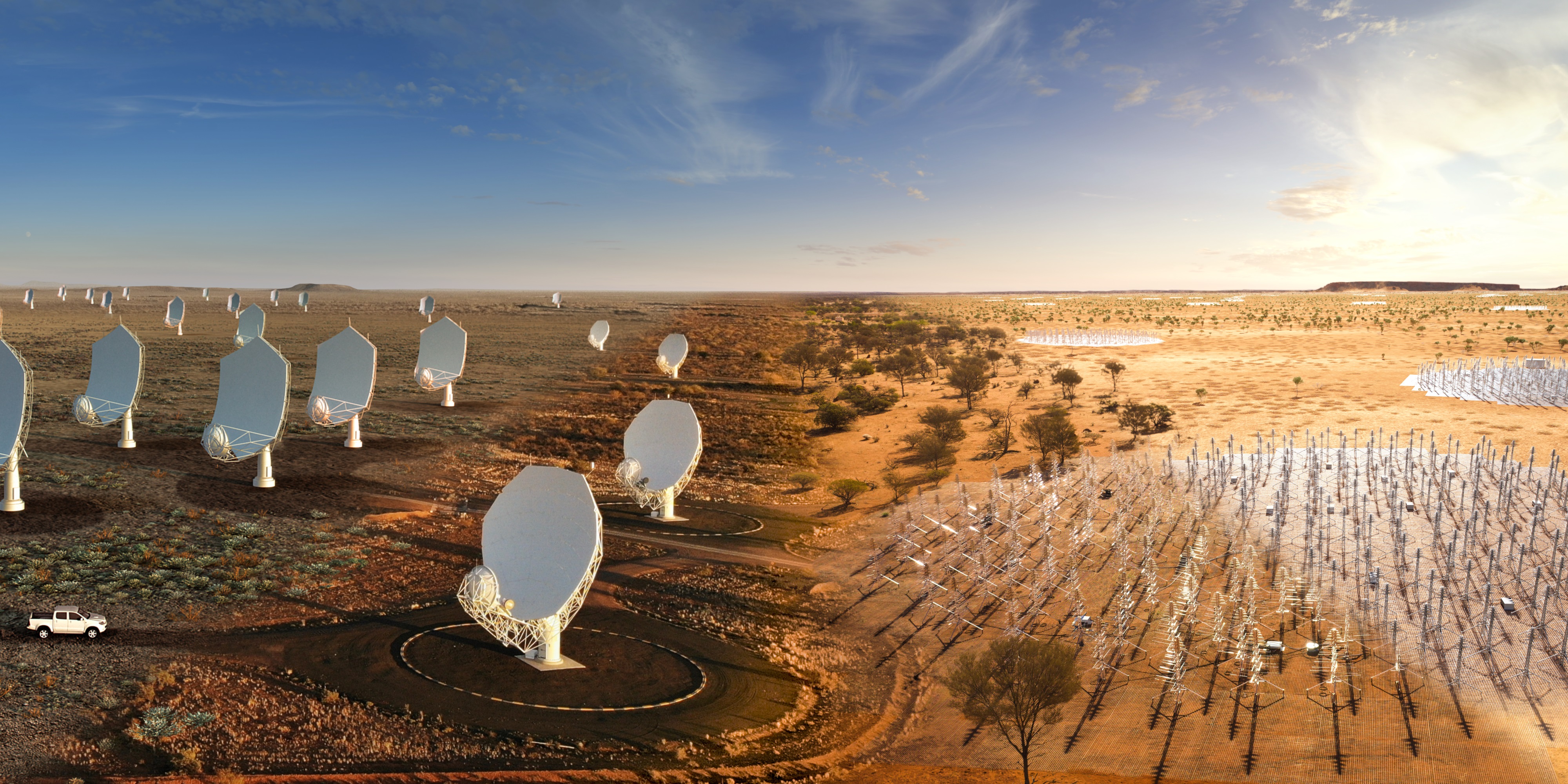On December 20th, the federal government approved Germany's accession to the Square Kilometre Array Observatory (SKAO). On the same day, the European Commission approved the establishment of the Low Frequency Array European Research Infrastructure Consortium (LOFAR ERIC). These milestones pave a bright future for radio astronomy research in Germany.
The Square Kilometer Array (SKA) will soon become the largest radio observatory ever built. Thousands of radio antennas located in South Africa and western Australia boost astrophysics research at radio wavelengths at frequencies between 350 MHz and 15 GHz, enabling unprecedented sensitivity and angular resolution.
Federal Research Minister Bettina Stark-Watzinger pronounced that „With the SKAO super telescope, we are entering a new era of astronomy. We are enabling new research and discoveries in our universe, also for the strong German astronomy.” Key science of the SKA include the nature of dark matter and dark energy, the formation and evolution of galaxies, of stars and planets, and even the search for extraterrestrial life. SKAO is an international effort with Germany becoming the tenth member country. Michael Kramer, director at the Max-Planck-Institute for Radio astronomy is delighted, "It is great to see that this expressed priority of the German astronomical community is finally becoming reality."
Artist's impression of the SKA antennas. Left: for medium frequencies (SKA-MID, South Africa); right: for low frequencies (SKA-LOW, Australia).
Photo: SKAO

The Low-Frequency Array (LOFAR) is currently the world's most powerful low-frequency radio interferometer. LOFAR was designed and constructed by ASTRON between 2006 and 2012 with its core in the Netherlands and since then grew to a pan-European project. Today, its over 100,000 small antennas spread across eight European countries, with six antenna stations located in Germany. The new legal form of the LOFAR ERIC provides now a robust framework responsible for the governance and operations of LOFAR, fostering even more efficient collaboration of engineers and scientists throughout Europe. Until 2026, a major upgrade to LOFAR2.0 will allow new observing modes and enhance the sensitivity and bandwidth of LOFAR. Modern electronics, IT and data technologies are key for the success of LOFAR. Its science covers a diverse and broad portfolio, ranging from studies of Earth’s atmosphere to cosmology, from exoplanets to black holes, and from cosmic magnetic fields to the solar wind.
"The recognition as a pan-European research infrastructure will open up new possibilities for LOFAR for the best of the European research community and beyond." says Dominik Schwarz, cosmologist at Bielefeld University and German representative on the board of the International LOFAR Telescope.
Parallel press releases
Federal Ministry of Education and Research (BMBF)Stark-Watzinger: Mit dem Superteleskop SKAO brechen wir in eine neue Ära der Astronomie auf (20.12.2023)
European Commission
Diving in ‘Dark Ages’ with LOFAR ERIC or combatting human diseases with INFRAFRONTIER ERIC: European countries are joining forces with two new Research Infrastructures (22.12.2023)
University of Bielefeld
Organisation für Radioteleskop LOFAR gegründet (22.01.2024)
Ruhr-Universität Bochum
LOFAR-Teleskop wird mit eigener Rechtsform geadelt (22.01.2024)
Universität Hamburg
Independent organisation established for LOFAR radio telescope (22.01.2024)
FZ Jülich
LOFAR Radio Telescope Becomes Consortium for European Research Infrastructure (29.01.2024)
pro-physik
Europäischer Rahmen für Radioteleskop (29.01.2024)
idw - Informationsdienst Wissenschaft
Eigenständige Organisation für Radioteleskop LOFAR gegründet (29.01.2024)
Raumfahrer.net
Hochmoderne Beobachtungs- und Datenverarbeitungssysteme für die Astronomie (22.01.2024)
astronews.com
Neue Organisationsstruktur für internationales Radioteleskop (23.01.2024)
Further information
SKA Observatoryhttps://www.skao.int/
South African Radio Astronomy Observatory (SARAO – SKA-MID)
https://www.sarao.ac.za/
LOFAR ERIC
https://www.lofar.eu/why-lofar-eric/
Bundesministerium für Bildung und Forschung (BMBF)
https://www.bmbf.de/bmbf/de/home/home_node.html
Contact
Representatives of the VdR:
Prof. Dr. Michael Kramer
+49 228 525 278
mkramer@mpifr-bonn.mpg.de